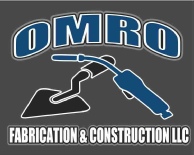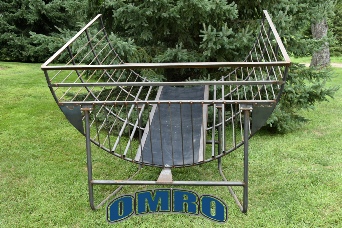|
Tips and Tricks to use this feeder safely and to ensure many years of use:
- The feeder must be placed on firm, level ground.
- Load the feeder with a spear (preferred) or pallet forks.
Do not use a bucket with
a grapple fork as you cannot gracefully set a bale into the feeder with a grapple
fork. - The feeder can be loaded from over a fence. Place the high/open end of the feeder
1-3 feet from the fence, depending on the reach of your loader.
- When loading the feeder, lower the bale from six inches to one foot from the feeder,
then cut and remove the net wrap or twines.
- Fluff the outside layer of the bale into the feeder (unless it’s moldy, you shouldn’t
need to throw away the weathered hay).
- When setting the bale into the feeder, watch for animals who could get caught as
the bale is lowered.
- When you set down the bale, the sheep/goats will be able to eat from the bottom and
sides of the bale. As they do, they will create a space along the sides of the bale
where they can no longer reach the hay. When this happens, pull down the hay from
the top of the bale and fill the voids along the sides. An ear corn hook works well
to make this an easy task.
- After 1/3 - 1/2 of the bale has been eaten, slide the bale down the slope of the
poly so the animals can eat the rest of the hay from the end of the bale feeder.
|
WARNING:
- Do not place the feeder on sloped, soft or non-level ground.
- Do not use a grapple to load a bale.
- Do not drop the bale – it must be set in gently.
- Do not allow the bale to slide off the end of the spear causing a shock load to the
feeder.
- Avoid putting tractor/loader pressure on the feeder when placing the bale in the
feeder.
- Do not try to move the feeder with a bale in it.
- Do not try to move the feeder when it is frozen in the ground.
There is no expressed or implied warranty in these statements/instructions as every
livestock
operation has its own set of unique challenges.
Print these tips
|





